Garima Arora
Having grown up in Mumbai, with her extended family in New Delhi, Garima’s festival of lights was all about firecrackers, the puja, and mithai. “We headed to Delhi every year, and it was a very traditional affair,” says the chef who now lives in Thailand and runs the one Michelin-star modern Asian restaurant Gaa.
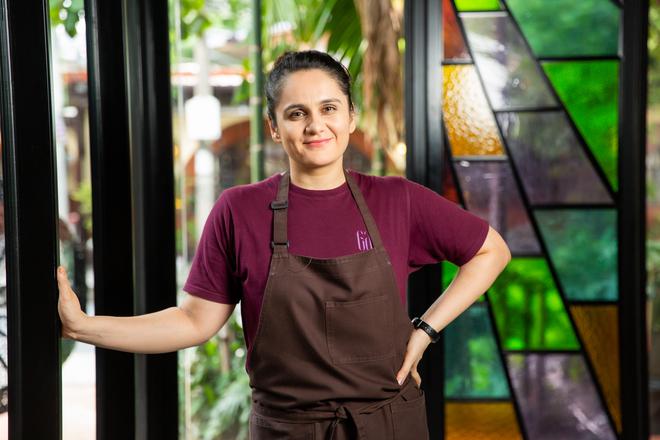
The mornings were spent cleaning, she says, adding, “we were all given rags and brooms to clean the house”. As a treat, her grandmother would make the children “cheeni ka paratha”, a layered flatbread topped with sugar. Lunch was always methi paratha with homemade butter.
After the evening’s Lakshmi pooja, Garima recalls how everyone looked forward to the halwa and dinner feast. “I still remember the one Diwali when our dog got to the halwa before us and passed out happily after finishing the bowl!”
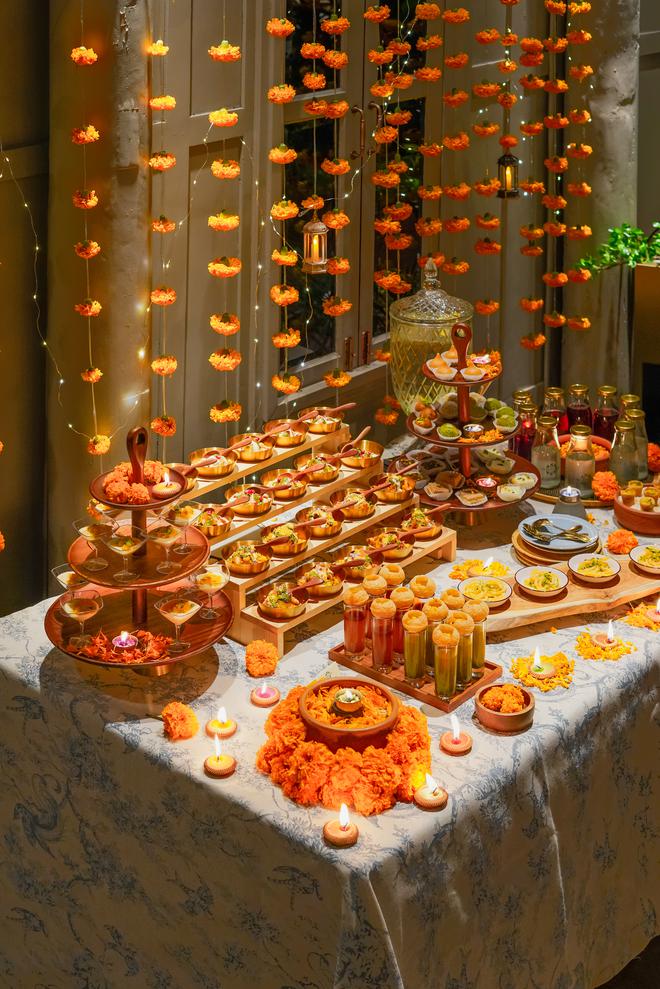
As for the feast, there was always the much-loved rajma chawal, jeere wale aloo, puri, raita, salad, and kheer. “My biggest weakness was the motichoor ladoo!” says the chef who also helms Marigold, a chaat and mithai cloud kitchen in Bangkok.
Garima, who has not been to India for Deepavali for the last 14 years, says this year the festival is special in more ways than one. “My son Aham will complete six months on Diwali day, and we will start his first solid food then.”
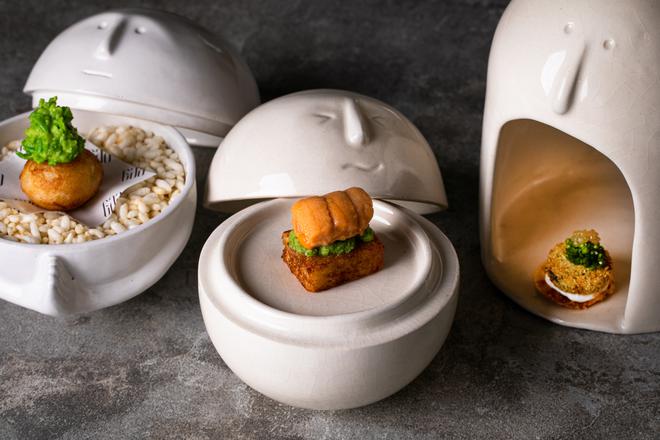
Garima’s festive menu: dahi bhalla papdi, and sev batata puri for starters to mark a mix of her upbringing in the capital and Mumbai; an Asian-inspired bowl meal of rajma chawal with sabzi, pickle, and curd; a motichoor ladoo smash with raspberry granita for dessert.
Vineet Bhatia
A particular festive ritual that Vineet recalls fondly is being the “delivery boy distributing the sweets my mother made to the neighborhood”.
“I still do that! Rashima, my wife, organises the mithai or we make it together and distribute it to friends and family on Diwali no matter which part of the world we are in,” says the chef, who was recently awarded an MBE (Member of the Most Excellent Order of the British Empire). The UK-based chef who runs several restaurants across the globe, had his restaurants Rasoi in London and Geneva, Switzerland, bag a Michelin star each in 2006 and 2009 respectively.
He says he enjoys the build-up to the festival. “Diwali festivities began a fortnight earlier. I recall my mother making a range of mithai, shakarpare, namakpare, etc. When my brother and I got back home from school, the aroma of her cooking enveloped the house,” says Vineet who was her official “taster”. Now that he has two sons, the chef continues this tradition with them.
On the day of the festival, he recalls the lunch being simple, but dinner was a grand, vegetarian affair. “It would not be everyday dishes. For instance, the occasion dal would be replaced by a maa ki dal with cream, the rotis would be stuffed, the raita would have pineapple or an aloo tadka, the gravy would be with koftas, and the rice would be a gobi or matar pulao,” he says, adding that the range of sweets was massive too. “We would have kesar jalebi, kheer, or a halwa with dry fruits.”
“Food is a big draw for everyone,” adds Vineet, who despite having lived overseas for several years, has kept these culinary traditions alive, albeit with a contemporary avatar. The chef says the availability of ingredients that are not easily accessible back home inspires him to tweak dishes. For example, asparagus is used in koftas, truffles are added to a pulao, etc. “The Diwali menu at home today is considerably different from what is served in our restaurants. We tend to have a series of small bites, followed by some comforting dal, dahi bhalla, chickpeas or rongi (lobia), a cauliflower-caramelised onion pulao, and then mithai.”
As his children were born and brought up in London, Vineet says his cooking adapted to their dietary preferences. “We enjoy more finger foods, snacks, and mithai as a family,” says Vineet, who has adapted his childhood flavours to the mithai he makes at home. These are not the typical heavy Indian desserts, but “a coffee jalebi, kulfi with seasonal ingredients, cheesecake with gulab jamun, and chocolate samosas”.
Vineet’s festive menu: spinach chilli gujiya and samosas for starters; corn koftas in spinach saag, dal tadka, berry pulao for mains; and kulfi falooda for dessert
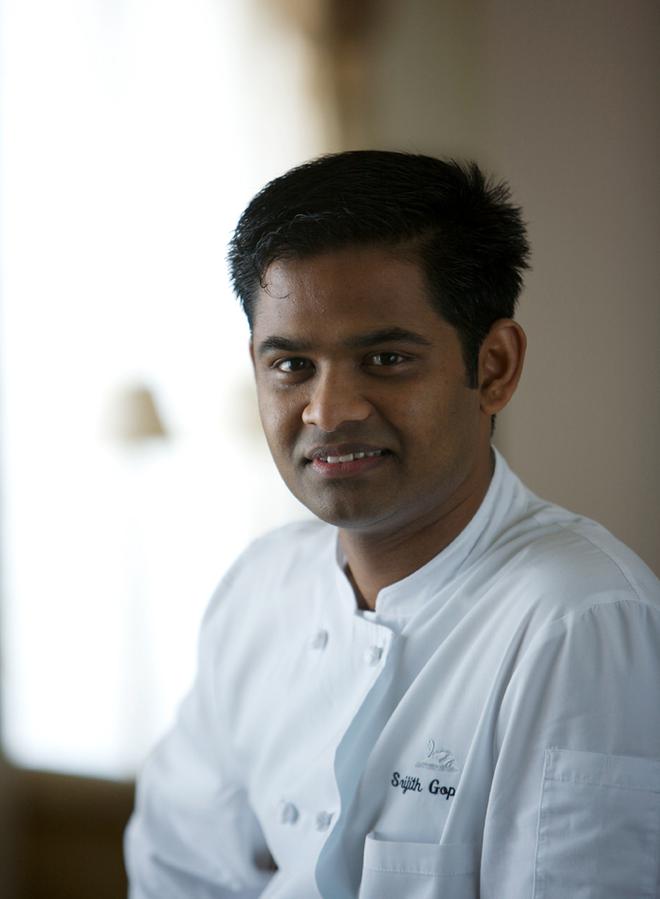
Srijith Gopinathan
After a session of cricket in the morning, Srijith recalls the grand Deepavali lunch that awaited the family. “I grew up in a suburb 40 kilometres south of Thiruvananthapuram which falls in the Kanyakumari district of Tamil Nadu,” he says, adding how it was customary for them to make a sadya for all special occasions.
“While we are primarily vegetarians and pescetarians at home, I recall having either chicken or lamb on Diwali,” says the chef who earned his first Michelin star for Taj Campton Place in San Francisco in 2010, which became two in 2014. He retained them until 2020, which is when he left to launch Ettan in California as executive chef and co-owner with Ayesha Thapar. Earlier this year, Srijith set up Copra, also with Ayesha, in San Francisco.
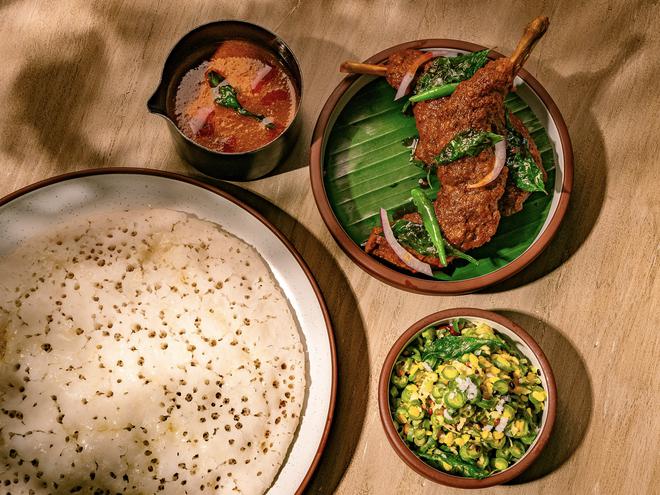
The meal, he says, comprised avial, thoran, eruserry, payasam and sweet eliappams stuffed with jaggery and coconut. “It was not the most gourmet-ish meal but it was always fun to be with the family,” says Srijith who recalls being a curious child around the kitchen, watching the chicken being readied for the meal, and spices being ground.
“After cooking the sadya, my grandmother would keep the vegetarian part of the meal in a dark room for about 10 minutes or so as an offering to our ancestors.” These 10 minutes, says Srijith, “were the longest ever!” for him and his cousins because “we knew a delicious meal awaited us.“
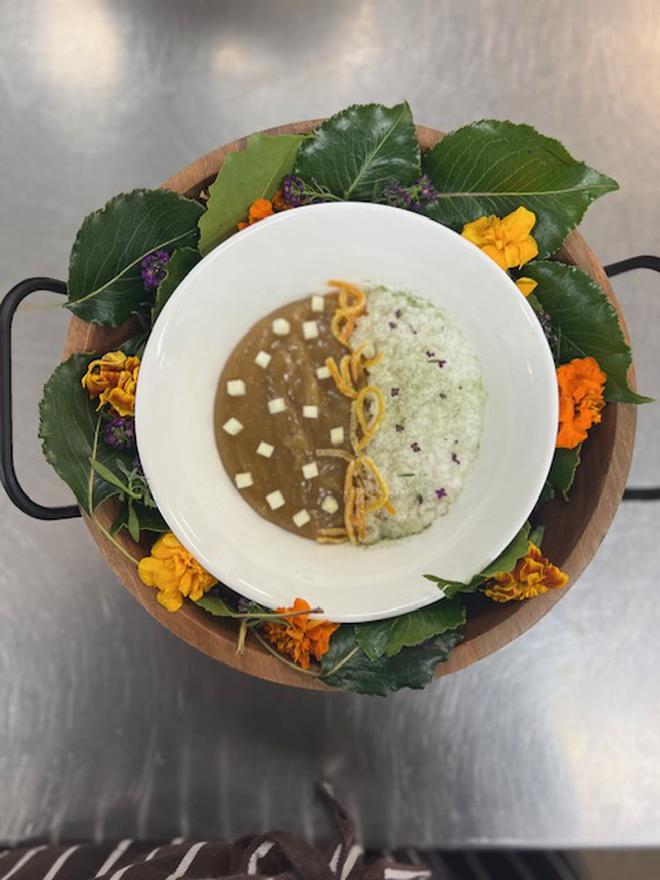
The fondest memory for him of Deepavali, however, is that of bursting crackers with his friends in the evening. “We would collect money from our parents, and relatives, and go to the neighborhood cracker shop. We’d see who has the biggest bag and liaise with them,” laughs Srijith, who has a new restaurant opening early next year in Silicon Valley.
Srijith’s festive menu: Brentwood corn parippu urundai for starters: a rabbit ghee roast with kallapam and candied basmati puffs, sambal peppers, and a dish championing the lobster or cod for main course; a green apple halwa for dessert.
Vikas Khanna
For Vikas, the fondest memory of Deepavali “has to be the cleaning of the house”. “I was a good painter,” he says, “We kids used to get our clothes stained with the paint which was great because we then got new clothes!” says the chef who grew up in Amritsar.
Vikas — the former executive chef at Junoon, New York City, that won one Michelin star for six consecutive years from 2011 — recalls the warm aroma of atte ka halwa (wheat halwa) enveloping the house on Deepavali morning as he collected fresh parijat flowers from the garden. “The wheat flour was ground at home, and I remember the halwa was made without dry fruits because they used to be expensive. My grandmother also used to make atte ke ladoo,” says Vikas who now runs Kinara in Dubai, and will be launching a restaurant in New York.
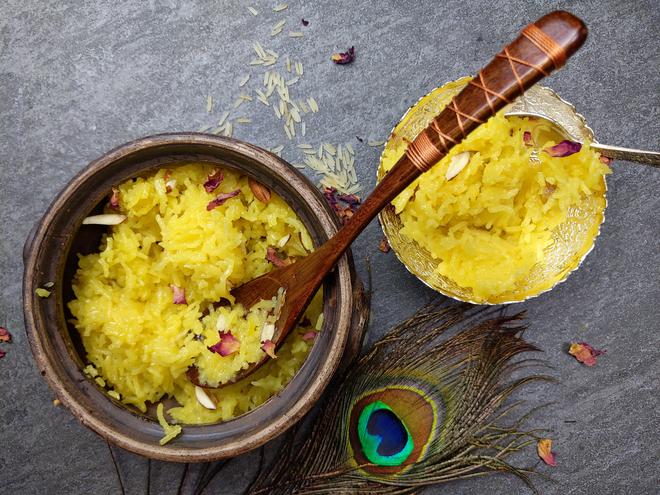
“We used to paint our own diyas that my grandfather used to get us, and then go meet relatives in rickshaws. There was so much excitement just being with cousins, and I loved it,” says Vikas, adding that he cannot help but think about how things have changed over time. “Professional painters replaced family members who would otherwise paint, the television replaced songs on the radio…” he says.
He still remembers his childhood festive lunches. “We always had the chikkad chana, black chickpeas cooked in a base of spices, with pooris. The dish had no onion, or tomato but just spices including dried anardana, jeera, cinnamon, lal mirch, etc.”
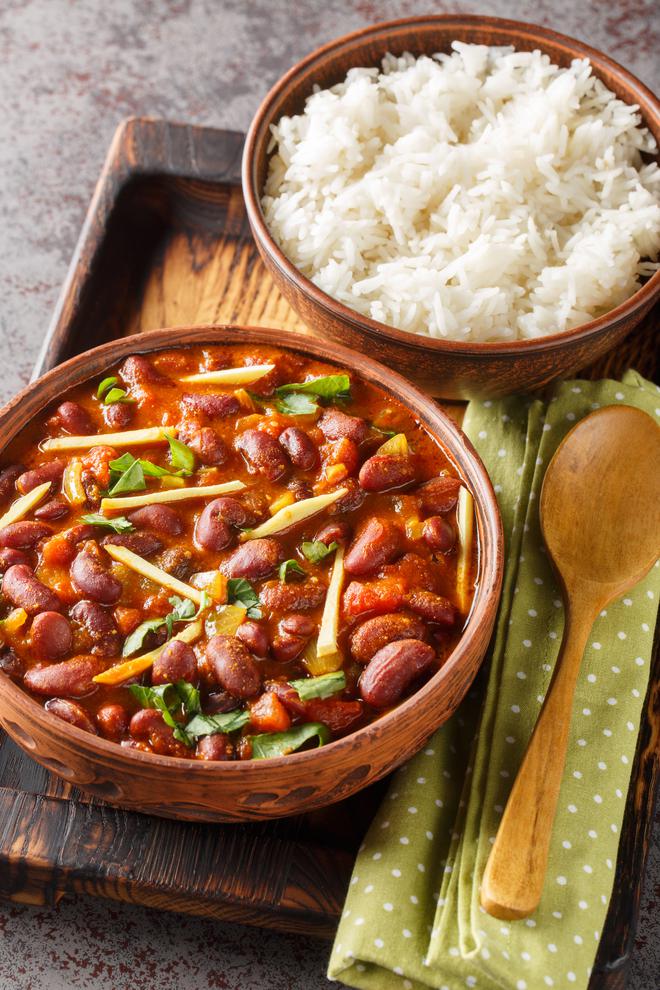
Since the festival marked the onset of winter, Vikas recalls how pumpkins, carrots, and turnips were in abundance. “It was the time we made a pickle using these vegetables. My biji (grandmother) used to say iss time pe dhoop meethi hoti hai (the sunshine is sweet during winters) and that the pickle would be sweet. Now we get everything year round so there’s no surprise, no wait.”
At dinner, the constant at his family dinner table was meethe chawal. “Sweet rice colored with haldi. If you were well-off, you used saffron instead,” says Vikas, adding that this was eaten alongside rajma chawal, puris, and sometimes a dish made with pumpkin (kaddu).
Vikas’ festive menu: Chikkad channe, kaddu ki meethi sabzi with saunf, rajma chawal, puri; meethe chawal for dessert
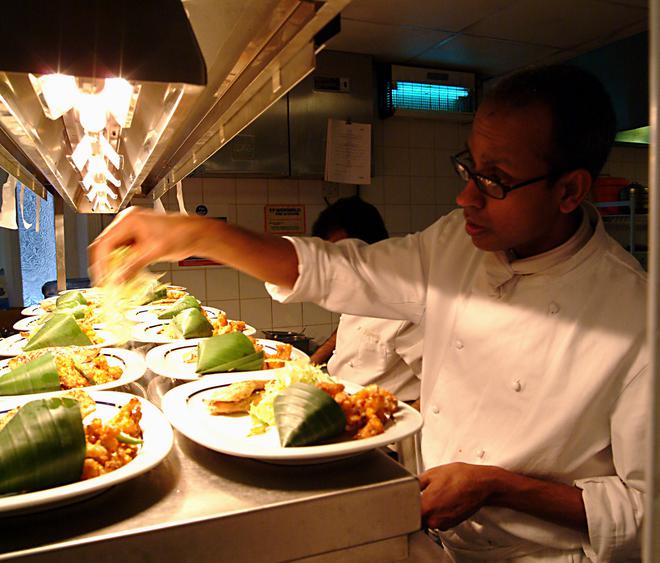
Sriram Aylur
For Sriram, the festival of lights is all about celebrating the spirit of community. The chef and director of operations at Quilon, a one Michelin-starred restaurant (retained for 15 years since 2008) in the heart of London serving South-west coastal Indian cuisine, explains how he was raised in one of Mumbai’s “cosmopolitan societies”.
He says, “There were south Indians, Gujaratis, north Indians…it was a mixed culture with varied food experiences,” says Sriram, whose father was in the catering business. “My parents were fantastic cooks, and we had a culture of feasts every weekend. Diwali was just an extension of that.”
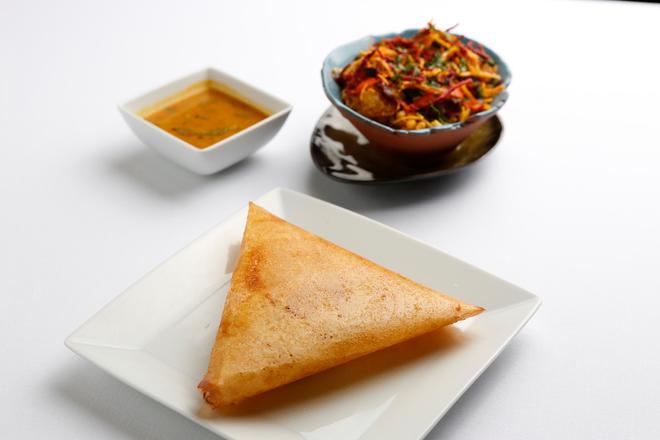
His fondest memory of the festival is getting together with all the children of the society early in the morning to burst crackers. This, he says, was followed by a hearty breakfast potluck of “dhoklas, parathas, idlis, dosas, vada…you name it!”
For lunch and dinner, the feasts continued with his mother churning out her famed green tomato curry, and masala vegetable rice. “My father’s vegetables with fried coconut, and a dish with colocasia leaves, raw banana, and aubergine were classic. These are our treasured family recipes,” says Sriram.
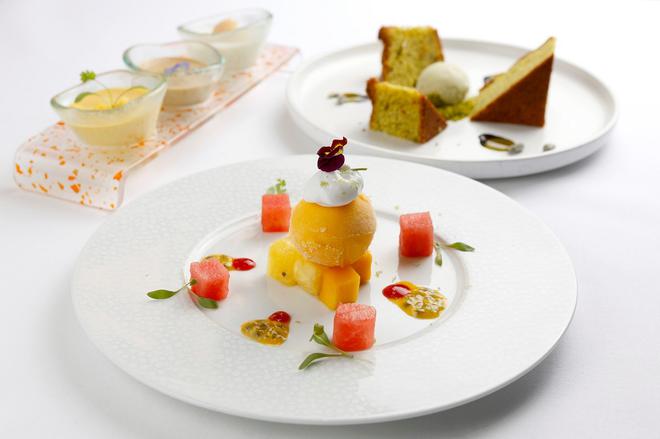
Sweets played a huge role in his home too. “From jalebi, Mysore pak, a range of ladoos, to savouries such as mixtures murukkus, pakodas, everything was homemade.”
“We’ve not had this celebration in decades. Making everything together brought us all together. I miss these Diwalis all the more now,” concludes Sriram.
Sriram’s festive menu: Vazakka vada, Mysore dosa for starters; avarekalu saru, avial, Mangalore cucumber pachadi, Andhra vegetable pulao for the main course; moong dal payasam, and millet halwa for dessert
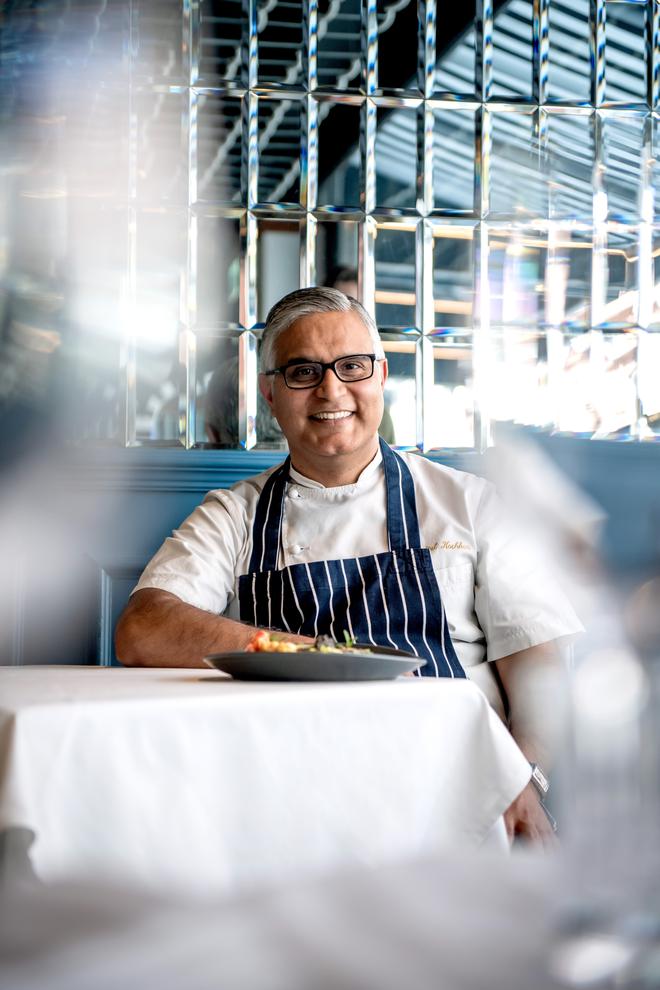
Atul Kochhar
Born and bred in Jamshedpur, the chef recalls being surrounded by people from across India in his apartment. “My mother was a teacher, and father in the catering business. As both were community-led professions, any festival meant everyone in the residential area getting together,” recalls Atul, who bagged a Michelin star each when he was at Tamarind (2001) and Benares (2006). He sold the latter in 2019 to open Kanishka, in London’s Mayfair district.
One of six siblings, the chef says they spent the days preceding the festival together, with cousins. “We all got together to clean the house. People were hired to paint it, and the nostalgic scent of chuna (quicklime) indicated big celebrations were around the corner,” says Atul, adding how they went to the street markets to shop for idols of deities, earthenware lamps, and toys. “The highlight for me were the sugar toys — hard boiled candy turned into toys. My mother used to give us a box each and we could suck on one sweet for days!” Atul says the region he grew up in also had a strong Bengali influence, which is why “the Lakshmi puja on Diwali was followed by Kali puja”.
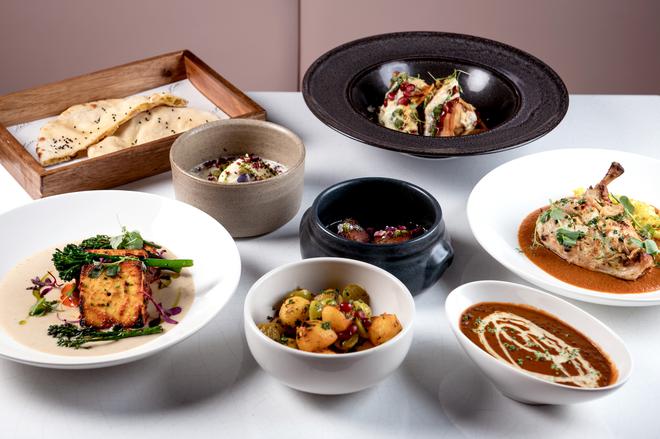
Circling back to the food, he says lentils were championed in the breakfast that comprised chillas of either moong dal or besan. “Lunch was light, primarily dal chawal. But it was the grand Diwali dinner feast that we all looked forward to. My father would set up a large table on the terrace and everyone from the apartment would join us.”
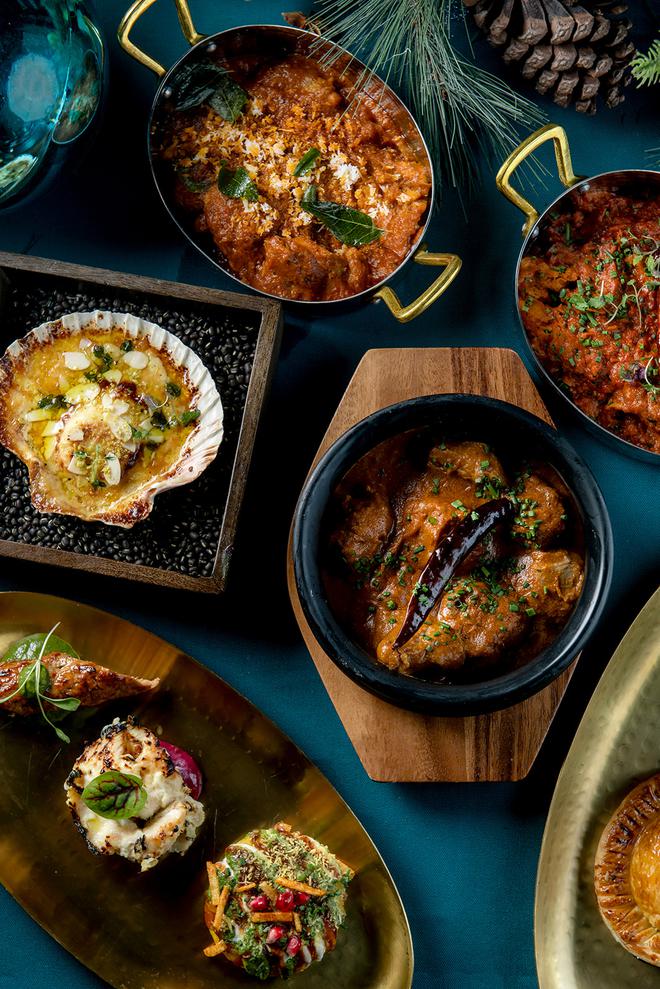
A staple at this feast was a chana dal khichdi (an influence of the Bengali culture). “This is a family tradition, and the flavour notes of the khichdi are still fresh in my memory. I cook this for my family every Diwali.” Other dishes included chole bhature, pooris, kheer, pulao, raita, and a range of sweets. “We had Bengali sweets like the chena murki, roshogollas, and regular mithai like ladoos, gulab jamuns ornately garnished with cream,” says Atul.
Atul’s festive menu: Chana dal khichdi with an apple, raisin and mint raita; samosa or aloo pakoras, namakparas, carrot or moong dal halwa, kheer, and gujiyas







